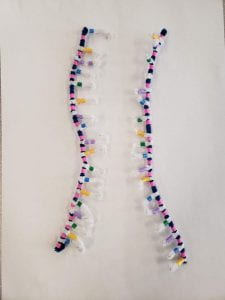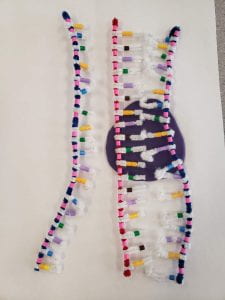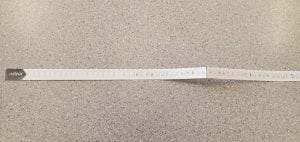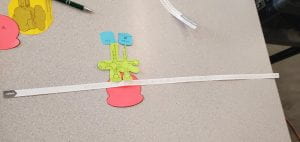RNA Transcription
1. How is mRNA different than DNA?
mRNA differs from DNA in a few ways. Instead of Thymine, mRNA contains Uracil, it also will not form a double helix, as it is only a single strand piece that copies DNA.
2. Describe the process of transcription
Step 1: The DNA unwinds and opens up (unzips).
Step 2: The mRNA attaches to one of the DNA strands, transcribing its message onto itself.
Step 3: The mRNA detaches from the DNA, and moves out of the nucleus to deliver the DNA information.
Step 4: The DNA strand reforms and winds back to its double helix shape.
3. How did today’s activity do a good job of modelling the process of RNA transcription? In what ways was our model inaccurate?
Today’s activity showed an easy to understand process of mRNA transcription, and the basic steps and concept of it. It was inaccurate though as it did not show what the mRNA did after transcription, or any of the other components involved in unzipping, or reattaching the DNA.
DNA Models:
DNA Double Helix
DNA Unwound
DNA Unzipped
DNA and mRNA Together
DNA and mRNA Separate
RNA Translation
1. Describe the process of translation: initiation, elongation, termination.
Initiation: The ribosome takes hold of the mRNA, getting up to the start codon.
Elongation: The ribosome moves along the mRNA, reading the codons “written” across the mRNA, and bringing the corresponding amino acid with the tRNA.
Termination: The ribosome reaches the stop codon, and stops reading the mRNA.
2. How did today’s activity do a good job of modeling the process of translation? In what ways was our model inaccurate?
Similar to the other activities, it shows a easy to understand process of translation, and teaches the general idea of how it works, and how to read an mRNA and its codons.
Activity Models:
RNA Polymerase
mRNA With Transcribed Info
Initiation
Second tRNA Linking
Amino Acid From 1st tRNA Linked to 2nd tRNA, 3rd tRNA Joins
Protein Completed
Protein With Corresponding Species












Leave a Reply